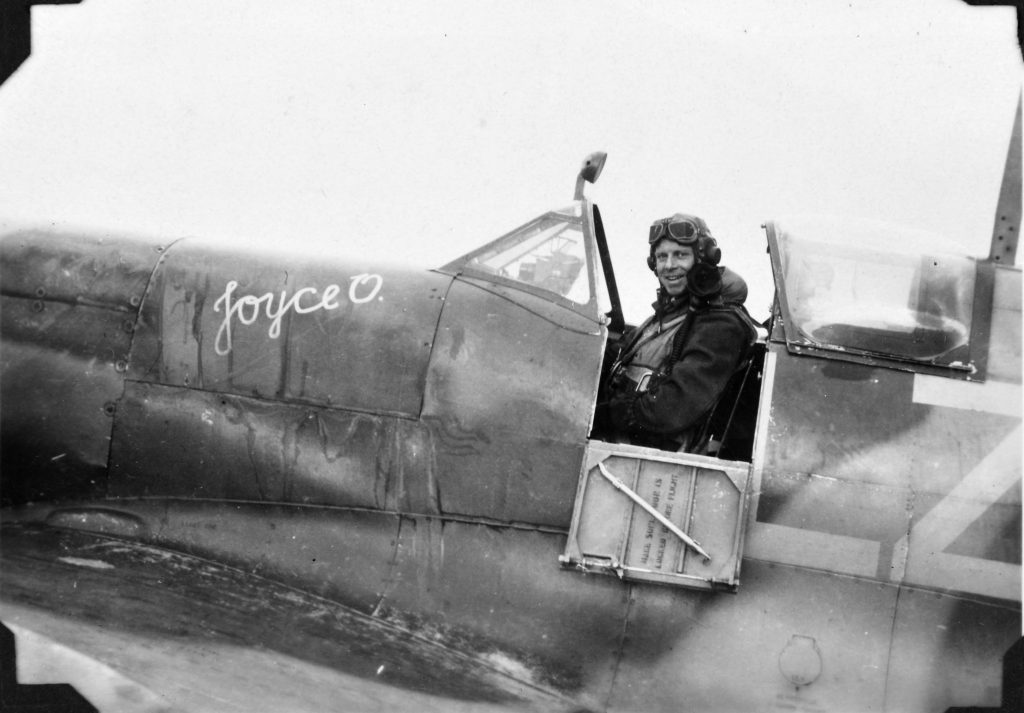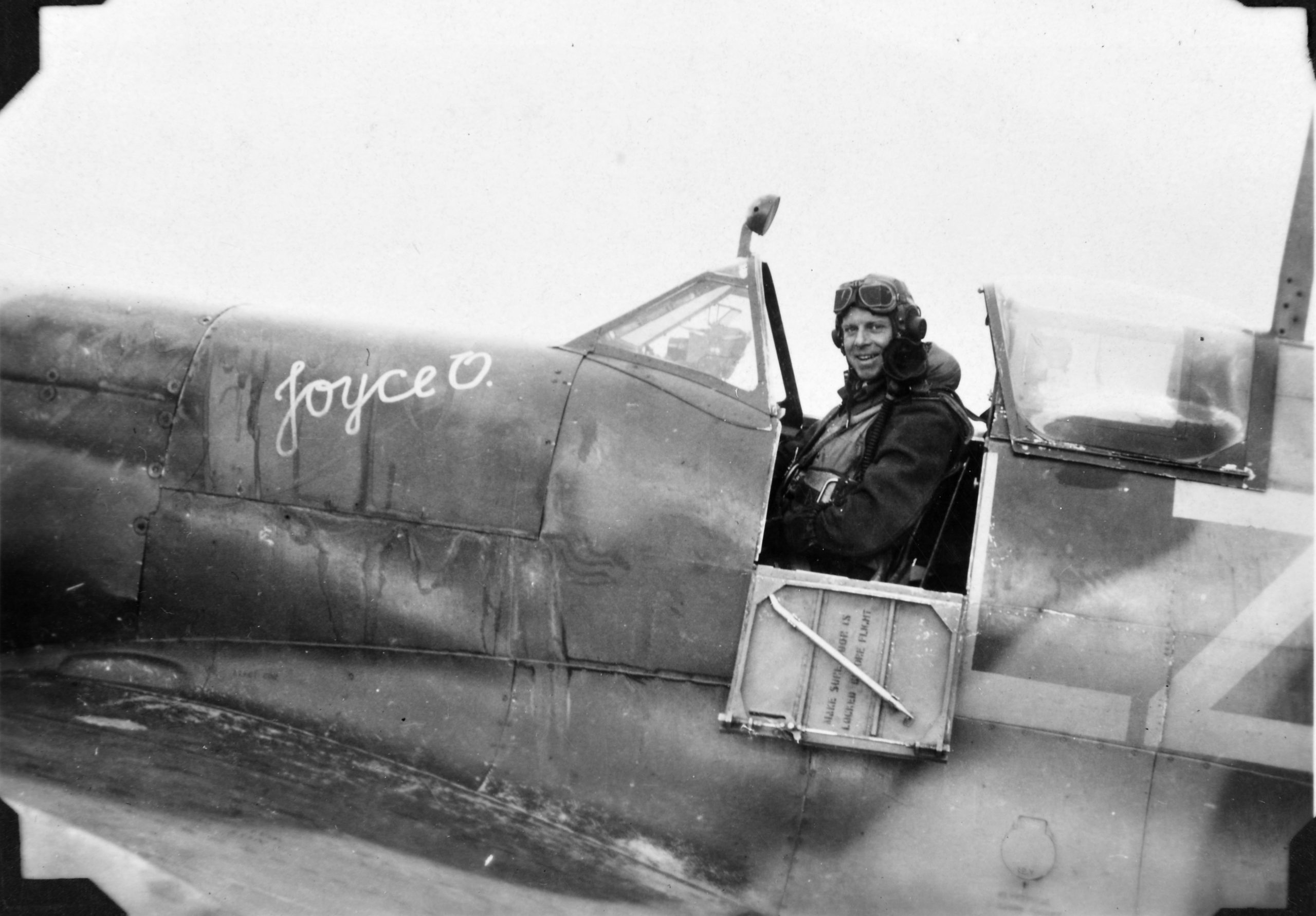Flight Lieutenant Stanley de Vere (known as Bruce) was born in Christchurch in 1919 and was a pacifist when war broke out.

He soon changed his mind and joined the RNZAF in May 1941. He arrived in England in 1942, was posted to No. 485 Squadron in late 1943 and then No. 66 Squadron in May 1944, flying Spitfires.
The build up to D-Day brought great excitement and de Vere described it as: ‘A great and memorable day! A day which will be remembered by millions all their lives – I certainly will not forget it.’
On 6 June de Vere, despite his operational inexperience, joined a sortie in the afternoon and described in his diary what he saw below:
‘On the way out, we passed continuous streams of convoys the whole way over. Right from Portsmouth Harbour and Southampton to the beachhead was this lane of every type of craft from battleships to small infantry-landing craft…. Then, just off the beachhead, still greater numbers of ships and craft were lying, the battleships and cruisers shelling enemy positions on shore.’
De Vere’s squadron moved to Normandy in August 1944. Living under canvas on a temporary landing ground in a hot August with mosquitoes and flies proved difficult, but he was able to visit some of the places where the fighting had been most bitter, such as Falaise, and pick up souvenirs and take photographs of the wreckage of war.
In December 1944, de Vere was awarded with the Distinguished Flying Cross for his service, having been wounded in the face. In all he flew 66 sorties. He died in Auckland in 2000.
His extraordinary diaries and photographs are now part of our museum’s archives.





